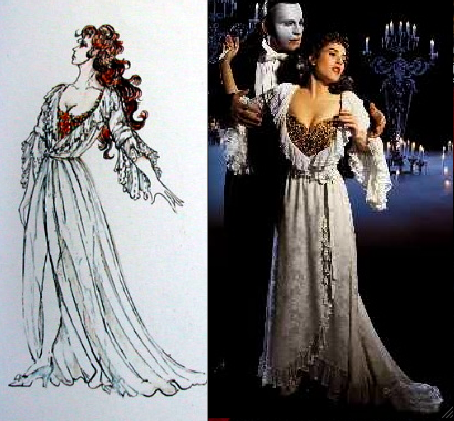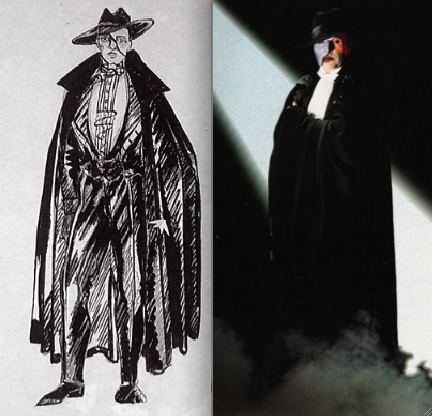Literature Review
Theatre costume (general)
· 19th century theatre, realism was the
predominant style. Scenery was usually designed by the scene painters.
Costumes were devised by performer and maker, or drawn by a specialist
and made by theatre workshops and outworkers,
· 20th century, setting up of training courses for
a career in design. Designers had more involvement in scene/set design
and overall look of the stage as well as costumes. It was common to
combine design work with a career as a painter or teacher etc.
· Costumes were well thought out, well made. They had to look
good close up and far away and last for a long time. A successful
production’s costumes would be worn every night for months or years. The
less successful, the more pristine the costume.
· Creative team – director, designer, choreographer, composer and conductor.
· Designer works with director (or choreographer) on the look for the show, designer then researches the setting.
· Costumes for each character convey their personality, mood,
age, status, occupation etc. Designer has to visualise how each costume
will fit into overall stage design.
· Designer will create a working drawing, sketch etc. for the
maker, some discussion may be had by the two or the maker may make some
decisions of their own about how the final garment will look.
Phantom Of The Opera, Maria Bjornson
· Originated from a French novel published in 1910, then made into 1925 film and various musical productions later on.
· Returned to London theatres in 1991, directed by Andrew Lloyd Webber as a west end musical.
· By 2006, there were performances in various other countries.
· Maria Bjornson worked as set/costume designer for the production.
· She was one of the most important contemporary designers on the international stage.
· She worked on over 100 productions throughout her career, Phantom being one of the most famous.
· She started off her career in the early 70s.
Blog woo :)
Wednesday 6 June 2012
Extract from the Maria Bjornson Tribute website, about Phantom of The Opera
Producer Cameron Mackintosh had seen Bjornson’s work in the opera house,
but it wasn’t grandeur that impressed him most when it came to picking
a designer for “Phantom.” “She was able to create a real world I could
believe in,” he says. “The reason why of all my shows ‘Phantom’ has
endured so long is that it requires the scale and beauty of the visual
to pull you in.” Lloyd Webber, too, acknowledges “Phantom’s” debt to
Bjornson, saying, “She brought femininity to it.” And the composer
disagrees with those who attribute the show’s visual success to excess.
“People talk about it being very spectacular,” he says, “but most
everything in the production is done with an extraordinary lack of
technology. A lot of ‘Phantom’ is extraordinarily simple. It’s just that
the design is so brilliant that it works right through.”
mariabjornson.com
mariabjornson.com
Francesa Zambello, who first worked with Bjornson at London’s Covent Garden in 1999
“She was relentless in getting it right,” Zambello recalls. “There are some designers who will not spend hours in the paint and costume shops, but Maria would not leave people alone until everything was right.”mariabjornson.com
Subscribe to:
Posts (Atom)


